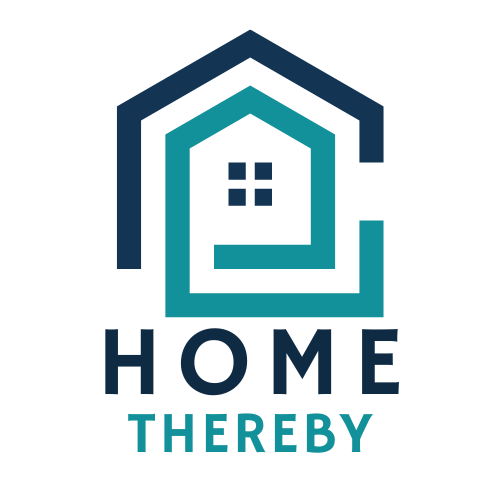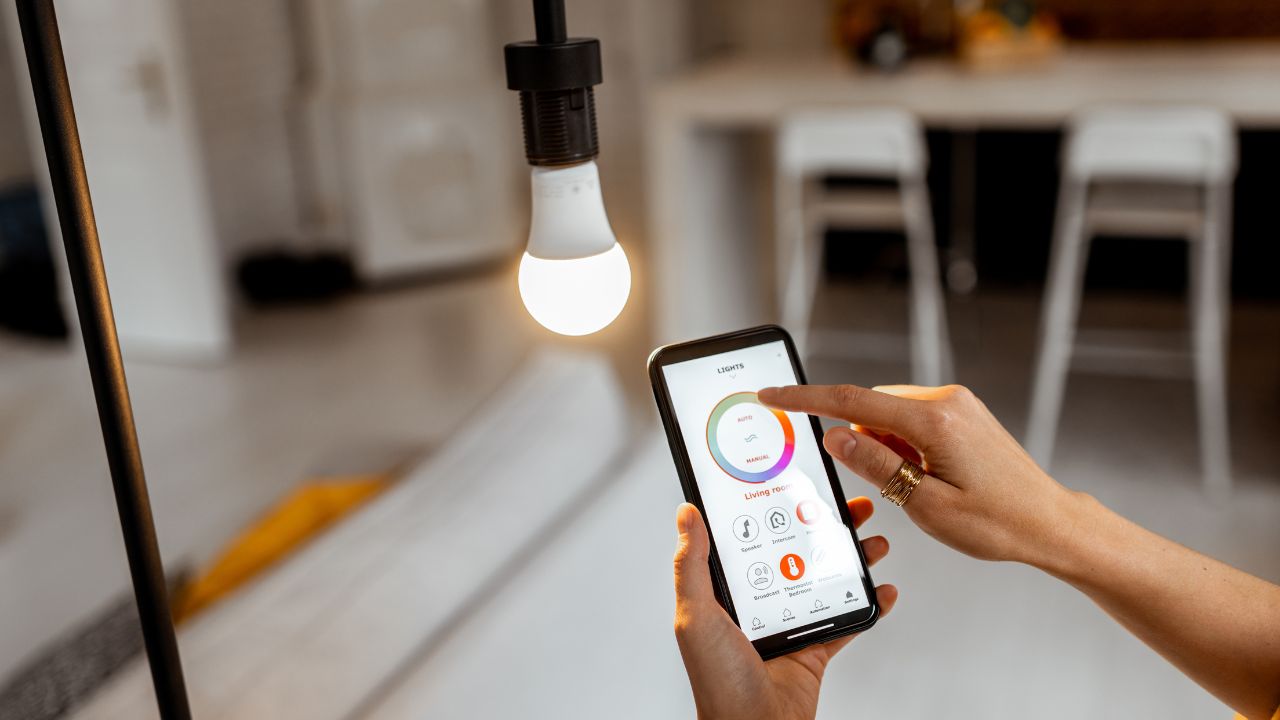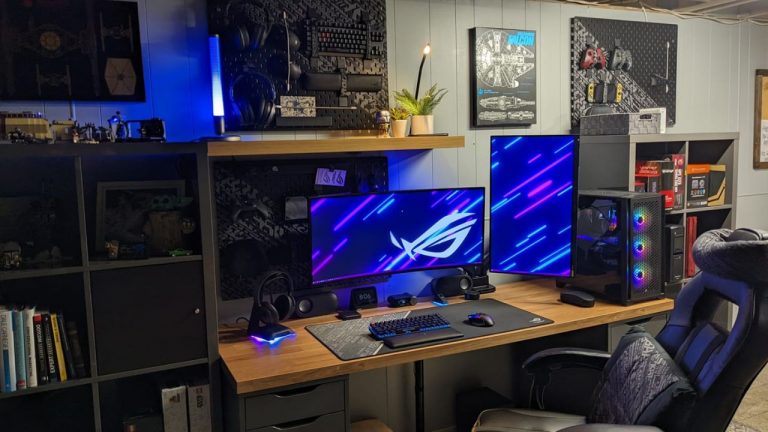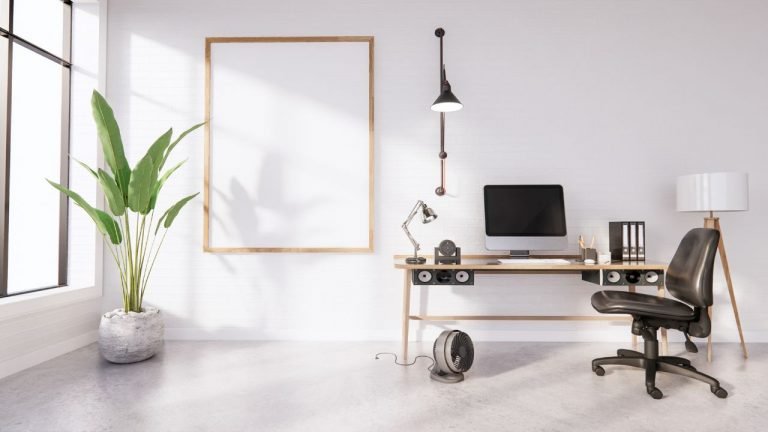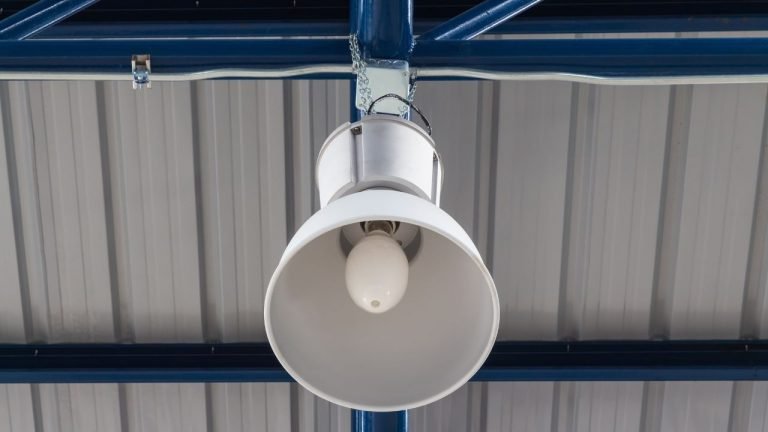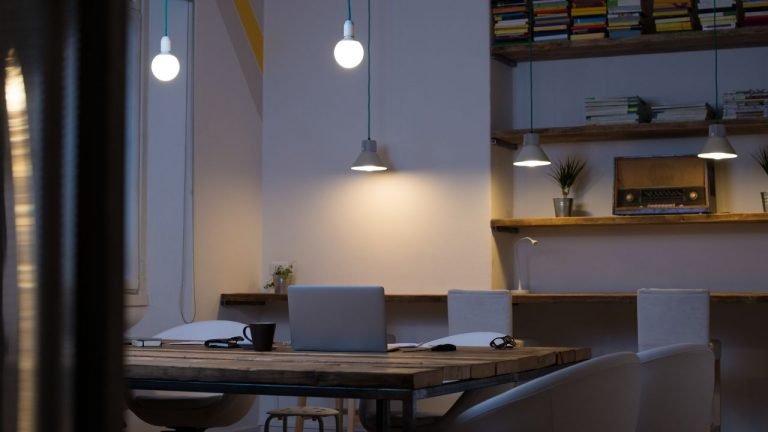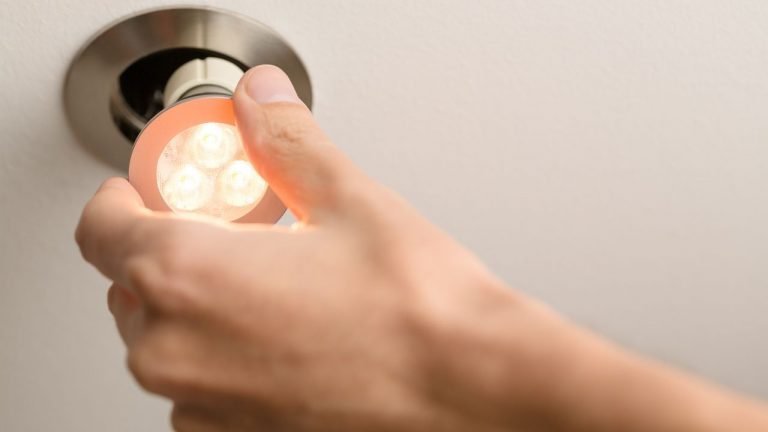4 Types Of Lights Use In Home Offices [& The Best One]
What’s the best interior piece that matters the most for your office? The answer would be comfortable and bright lights without a doubt. But there are so many options out there. So, what type of lights should you use in the home office?
Incandescent light tubes are the oldest forms of lighting for office and are not very convenient for the eyes. While the fluorescent bulbs contain harmful mercury vapor inside the shell. By far the most reliable and durable office lighting is the smart LED system. Even though the CFLs have a lot in common with LED lights, it has several drawbacks to tackle with.
That’s only a short preview of what we have in store for you throughout this article. Here, we will talk about various types of lighting and which area they suit perfectly. Not just that, we will analyze each lighting type and rank one of them as the best.
So, are you ready?
What Are The Different Types Of Lighting Systems In the Home Office?
1. Incandescent
Incandescent tubes are the most traditional forms of lighting. Almost every office, building, or commercial space had these light tubes on the ceilings. But it came with a lot of cons. For example, it has a reputation for wasting way too much heat. That’s why it frequently shows issues like burned diodes that require fixing.
That being said, incandescent tubes have not vanished at all. It is very common to find them hanging on the ceilings of big manufacturing factories. But, why is that? Well, let’s check out some of the scenarios where these traditional and old-fashioned tubes work best.
Why Should You Prefer It?
Fits The Low Budget
If you have a low budget to spend on the main lighting for the workstation, incandescent tubes are a lifesaver. You can get a 60-watts unit for $2 only. Keep in mind that incandescent tubes draw a lot of electricity to function properly. For example, it will need at least 60 watts for illumination of 800 lumens. So, if you are willing to cut costs on the lighting prices, make sure the utility bill is not an issue.
Brings An Aesthetic Look
Most people want their home office to have a specific kind of look. It should blend well with the overall aesthetics of the house. And, believe it or not, incandescent tubes can be your go-to option for this.
Unlike modern LEDs or CFLs, incandescent bulbs normally come with a warmer color tone. For example, you need to go below 3000k to bring the yellowish tone in the lighting. However, most LED or fluorescent lights come with a temperature of 5000k to 6500k.
Less Need For Reading Or Writing
You see, reading is a tough task for the eyes. That’s why the lighting should be bright enough. Otherwise, you can face eye strains or headaches frequently.
But the story is different when such activities are not involved. If you do mostly computer work, your screen brightness matters the most. You can easily get away with a cheaper incandescent option. Also, you can install these lights to light up areas where people don’t hang out much.
Limitations
- It hardly serves you for 1000 to 1200 hours. That means you have to spend a lot of money on replacement and maintenance.
- The lighting is not ideal for doing paperwork or other intensive office tasks.
- It wastes a lot of energy for producing a low number of lumens for an area.
2. Fluorescent Light Bulbs
Fluorescent lighting consists of a glass bulb blocking mercury vapor inside it. As the electricity runs through the electrodes, it excites the mercury inside. Light is the final product of this process. It is brighter and closer to natural sunlight (6500k).
But the problem arises when you sit under such lighting for a long time. Most people complain about dry eyes or double vision due to harsh fluorescent lighting in their workplace.
Why Should You Prefer It?
Brighter Than Incandescent
Suppose you want all the features of an incandescent bulb but brighter. Where do you go? Yes, fluorescent tubes are the answer. It can produce more lumens for the same watts. Also, the color temperature is kept on the upper scale for fluorescent tubes. As a result, these bulbs can shine brighter even though the lumens or watts are exactly the same as an incandescent bulb.
More Energy Efficient
Fluorescent tubes are 66% more efficient than a typical incandescent bulb. As we said earlier, fluorescents require fewer watts to generate as many lumens as the incandescent. It can be a huge relief for someone trying to save money. Moreover, if you use too many bulbs in the area, the cost for each will add up to the bill eventually.
Lasts Longer
When it comes to lifetime, fluorescent bulbs stay between the LED & the incandescent tubes. If you are someone who doesn’t want to be bothered by so many maintenance obligations, you should try a fluorescent light bulb.
Limitations
- The number one reason why we wouldn’t recommend a fluorescent light is UV radiation. We already know that it mimics the natural sunlight and its harmful radiations as well. Unless you have a way to block those radiations from reaching your eyes, you should avoid the lighting completely.
- The color temperature is closer to 6500k for typical fluorescent lights. Researchers have found that higher temperature leads to a cooler or blue tone in the light. It can be pretty harsh on the eyes.
3. Compact Fluorescent Light Blubs
As the name suggests, CFL is the latest version of fluorescent bulbs. If you want the goodness of a LED light without spending a high amount of money, this should be your pick. It has an increased lifespan and energy efficiency. Plus, homeowners love the variety of shapes and colors these lights come with.
Why Should You Prefer It?
Average Lifespan
A 15-watts CFL bulb can easily complete 10,000 hours of the cycle. That gives us, (10,000/5) = 2000 days of service. Keep in mind that, the number can decrease depending on how many hours you keep the light on every day. So, let’s divide it by 365 and we are left with 5.5 years.
On the other hand, an incandescent bulb promising 1000 hours, will last for only ½ year. You can stretch it up to 1 year by reducing the usage per day. But it will still lose this race to the CFL bulbs no doubt.
Less Mercury
Most of the time, old light bulbs are found in the trash. Those bulbs contain toxic elements like mercury and affect our nature. Luckily, the amount of mercury present in a CFL bulb is only 4% of its predecessor fluorescent tubes.
Plus, the design of the CFL bulbs doesn’t allow the mercury to leak so easily even after being disposed into the trash. So, that’s a big plus point if you believe in sustainable décor for the home office.
Range Of Shapes & Designs
CFLs are available in both boring and fancy designs. Which shape fits your area better is up to you. You can also put some diffuser or shades on these lights to distribute the brightness equally. Also, you can pick different colors to enhance the environment in your home office.
Limitations
- One big disadvantage is that you still can’t get rid of mercury. Even if the amount is very little, it’s not zero percent.
- Another problem is that it is pricier than the previous lighting systems we discussed here.
4. Smart LED Bulbs
Here comes our favorite type of lighting for your home office. It has successfully eliminated all the drawbacks of the old lighting systems. Plus, you have a huge array of LED light shapes or designs to choose from.
Apart from adding to the interior of the office, each lighting type has a significant purpose. We will talk about the different variations of LED lights in the latter segment of this article. So, keep reading.
Why Should You Prefer It?
Energy Saving
LED bulbs are 90% to 95% more energy efficient. You can have the same brightness of a 60-watts incandescent tube from a 12-13 watts LED bulb. Do you see the reduction in watts here? That’s how much you can cut your utility bills by switching to the smart lighting system.
Sustainable Option
Unlike fluorescent or CFLs, LED bulbs are free from toxic elements like mercury. So, even after you dispose of the units in the trash, you don’t have to worry about the environment.
Adjustable
Most LED bulbs come with a smart feature that promotes adjustability. You can adjust the luminosity of the bulb through a regulator. If you feel the sunlight is enough, you can lower the LED’s brightness. In the same way, you can turn it back up for midnight study or paperwork.
Less Long-term Cost
A 13-watts LED light can easily reach the threshold of 20,000 hours. Some of these lights can even go up from 50,000 hours to 1,00,000 hours. So, let’s assume we keep the light on for 5 hours each day. We will be left with 11 years. It’s 6 years more than a 15-watts CFL. That’s crazy, right? Even though you would be spending $3-$5 extra on each unit while purchasing, it would have the lifespan of two CFL bulbs.
Limitations
- The only limitation of LED light bulbs is their higher price range.
What Type Of Lighting Is Best For Home Offices?
The best lighting for your home office would be the one that makes your eyes comfortable. After all, there is no need for fancy lights that affect your eye health. So, let’s figure out what kind of lighting works best for the eyes.
Research suggests that ultraviolet radiation is extremely harmful to eye tissues. You can get permanently damaged retinal cells. So, we will eliminate the unfiltered sunlight first of all.
Did you know that you can face UV rays without opening the windows at all? Well, how’s that? It happens when you rely on lighting from fluorescent or incandescent series. These lights mimic natural light and produce UV rays as well.
Our recommendation is to choose the LED lighting option. It is free from harmful radiation and safe for your eyes. Now that we know the ideal lighting type, let’s make it even more comfortable.
You can do that by experimenting with different colors as the lighting background. Scientifically it is better to stick with a warm white background. It might slightly look yellow. Surprisingly, it is the right color texture that soothes the eyes.
What Type Of Light Bulbs Are Normally Used In Office Buildings And Stores?
Incandescent light bulbs were the favorite lighting system during the 1900s. Almost every commercial space was adorned with these light tubes. However, the scenario has changed. You will notice business establishments bending towards the LED alternative. We have already talked about the reasons above.
Now, let’s take a look at the various styles of lighting you will notice in a modern office or store.
Overhead Pendant Lighting
Most of the time people mistake pendant lighting to be a chandelier. There’s a big difference. Unlike the chandelier, an overhead pendant light contains only one bulb for each fixture. Why is it used?
Big offices have areas that need highlighting. For example, an entryway or product counter. To provide sufficient lighting to those areas, companies install separate overhead lighting like that. It also contributes to the beauty of that room.
Track Lightings
Secondly, we have track lighting or focus lighting. And, why is it named that way? Because it directs people’s attention to a specific showpiece or painting. You never know how much power lighting has. It can change what people see first when they enter a room.
That’s why big offices or stores use track lights. Track lights don’t have a 360 degrees distribution angle most of the time. Because it is not intended to light the entire room. Even if the luminosity is the same as the main ceiling bulbs, it concentrates all the light on a particular object or equipment.
Task Lamps
Task lighting is a part & parcel of any office. You will find such lamps on most desks. No matter how illuminated the whole room is, you always need more light while reading. Even more, if it’s a hard copy.
The job can get very stressful if it involves designing or drawing something. You must focus on details while not straining your eyes.
Task lamps are directed lights that are designed with a limited distribution angle. So, the beam of light coming out of the lamps is very narrow. As a result, it doesn’t illuminate the whole area when you turn it on. Only your desk receives the extra brightness.
Natural Sunlight
Offices are highly dependent on natural light. You have probably seen rooms with a big glass window on social media. It allows a sufficient amount of sunlight to get inside. Natural light can directly increase productivity and enhance the mood of your employers. And, it’s tested. Our brain tends to “wake up” when we work under natural light.
You can just put some curtains or blinds over the window to adjust the level of lighting required.
Are LED Lights Good For Office?
If you have gone through the article till now, you already know the answer. Yes, LED lights are the most preferable option when it comes to office lighting. The bulb doesn’t contain any mercury or other toxic ingredients in it. It is easier to accomplish a certain type of brightness in the office area using LED lights.
For example, detailed works like drawings require 500 lumens of light per square ft. If you want to achieve that same amount of lux through traditional light tubes, it would require more than 10 units on the ceiling. Neither it’s pleasant to look at nor it’s easy to maintain. And, let’s not even go towards the utility bills for that much electricity.
On the other hand, you can just install 4 units of 22-watt LED bulbs around the room to get the brightness of 500 lux.
What Is The Standard For Office Lighting?
Having a bright workplace is a right of an employee. It is necessary for the worker’s physical and neuro-biological wellbeing. But who decides how much lighting is enough? Of course, companies can save money by reducing lighting bulbs. So, why don’t they? That’s because OSHA ordered a minimum amount of brightness obligation in every business establishment.
Currently, it is thirty foot- candle. In simple terms, it refers to the illumination of 30 candles inside one square ft. Or, you can say 500 lumens per square meter. It all means the same.
But you shouldn’t rely on this rule only. Because office sizes and their work types are different. And, so do their lighting demand. If you want to keep the workers happy and productive, install more bulbs than the standard limit.
Which One Is The Best Office Lighting For Computer Work?
Thankfully, computer work doesn’t require “too bright” lighting. So, you can easily get away with a high-quality CFL bulb on the ceiling. Make sure there is no extra illumination in the room to create a glare on the screen. You can also use task lamps to highlight the desk area.
In that case, put the computer in a way to avoid conflict with the lamp light. Moreover, you have to make sure the accurate number of lumens is present in the room. If you watch digital devices in a darker lighting setup, it can cause more harm than benefit. So, keep that in mind.
Also, you shouldn’t forget a blue light-blocking shield. It is a cover that filters the outcoming rays from the device.
How To Choose The Best Home Office Lighting For Eyes?
To see clearly without stressing the eyes, you need at least 100 to 150 lumens per square ft. It will be 3000 lumens in total. And, that’s for doing normal or general tasks only. As the jobs get complex and more intensive, you need to look for higher luminosity (500 lux or lumens per square ft).
So, don’t worry about how much power the bulbs have. As long as all the bulbs in the room can deliver the desired output (3000 to 5000 lumens), the power or number of units doesn’t matter.
Next comes the background color. Our eyes can only see from 380 nm to 680 nm. The higher you go on the scale, the harsher the light becomes (blue, violet). On the other hand, if you go to the lower end, it will be too dim to be comfortable (red or orange). So, that leaves us with either yellow or green. But yellow is more popular as a light background in offices than green. Hopefully, you won’t regret sticking with it.
If you want to learn more about home office lighting for reducing eye strain, kindly follow our article on this topic.
Wrapping Up
Seeing is believing. And to see better, you need a good lighting. Throughout this article, we tried to give you an overall idea regarding how many types of lights are normally used in the home office. We have also matched each lighting type with its intended purpose. And, we didn’t miss their limitations too.
Finally, we suggest you not to stress over the visuals from the very beginning. First, follow our guide to identify what your office actually requires. Once you know the lighting type, customizing its shape or design becomes a piece of cake.
So good luck!
